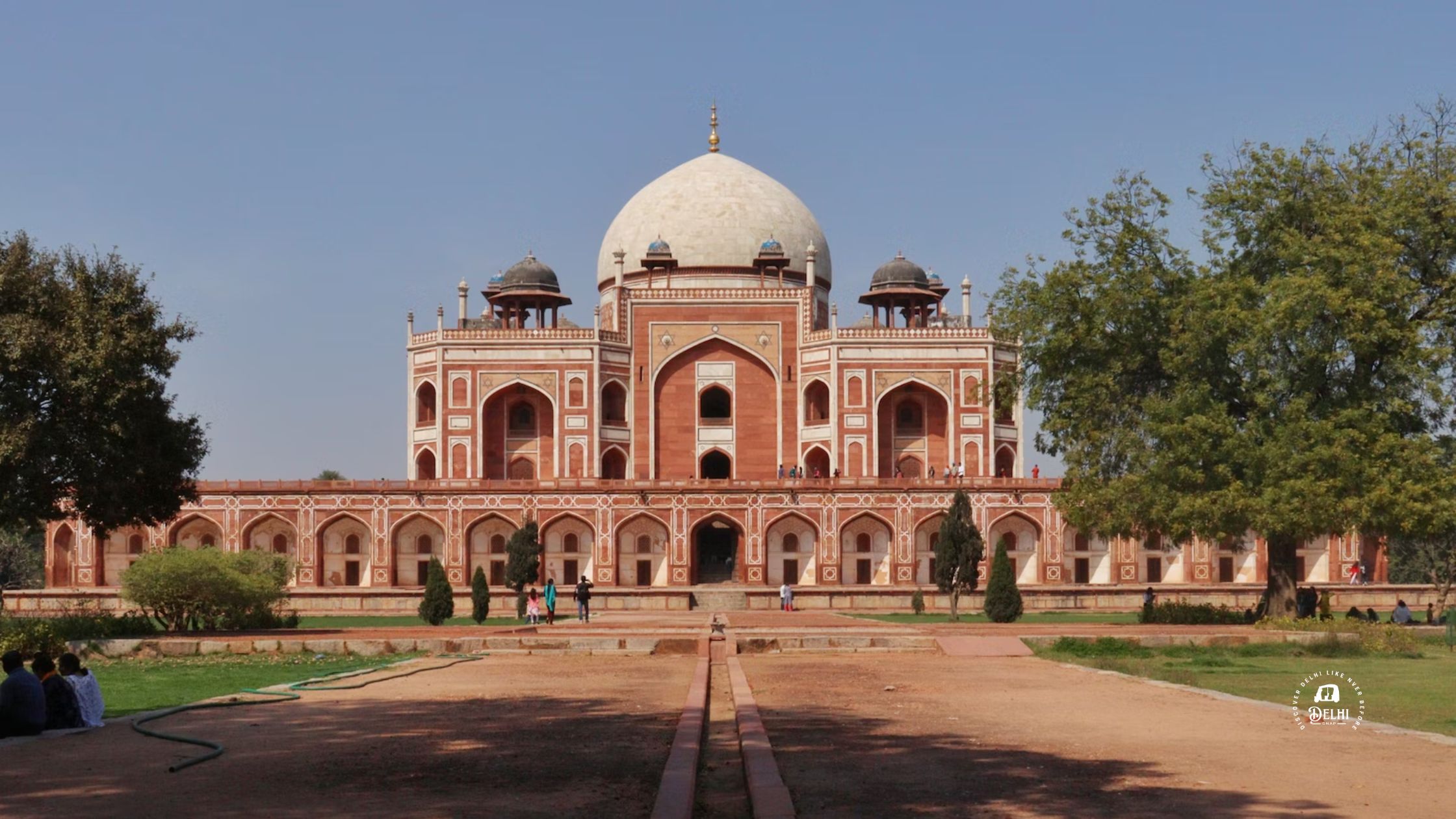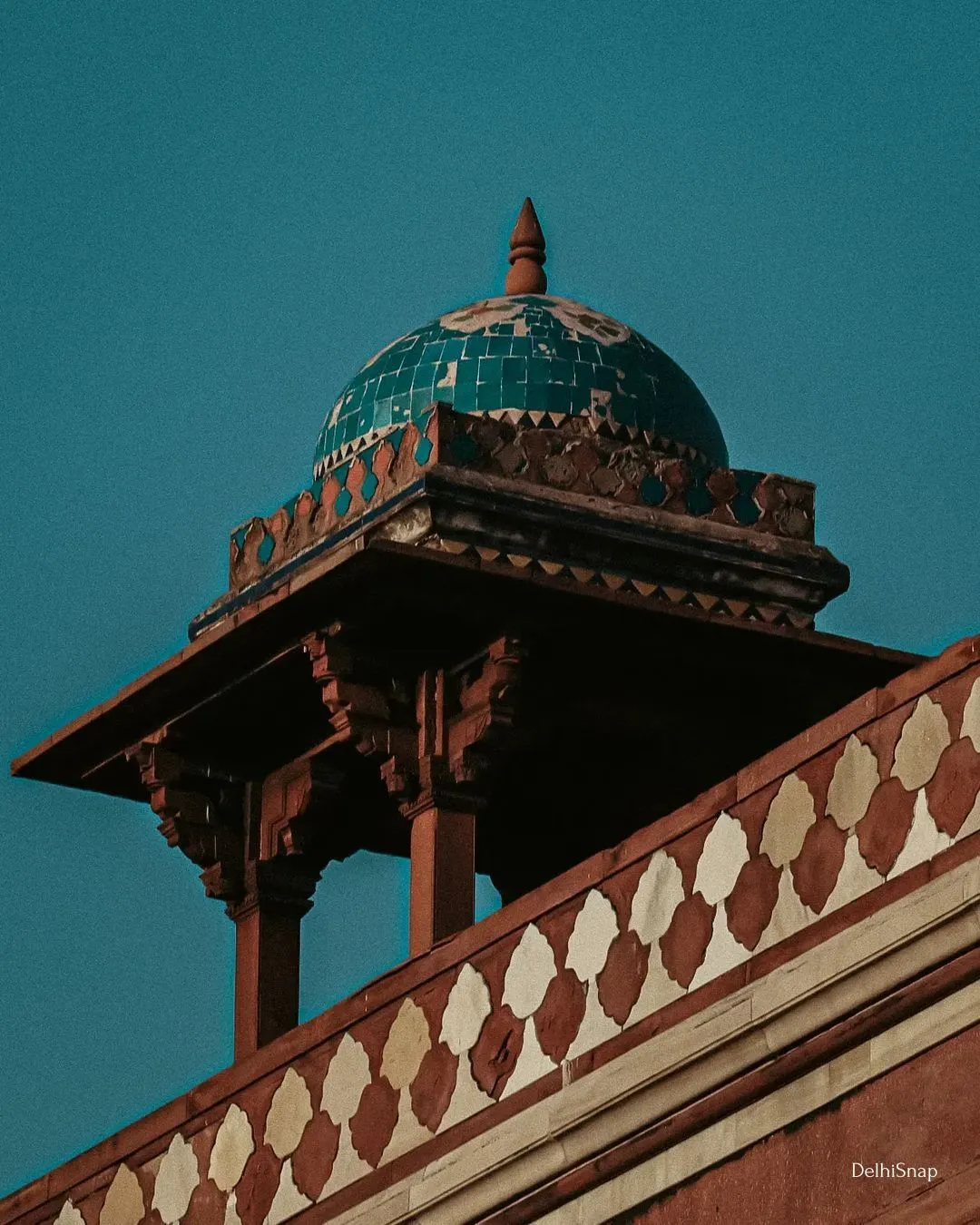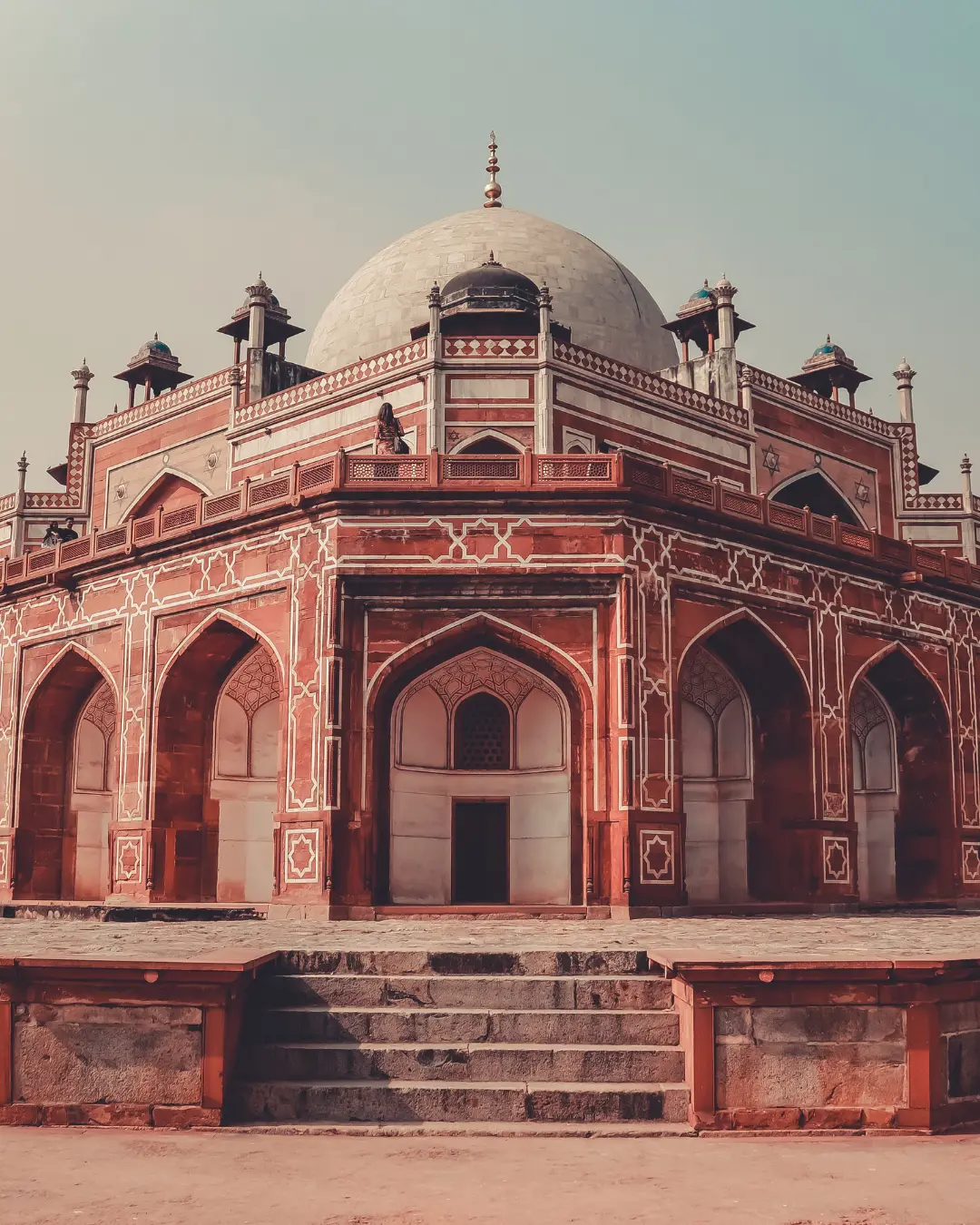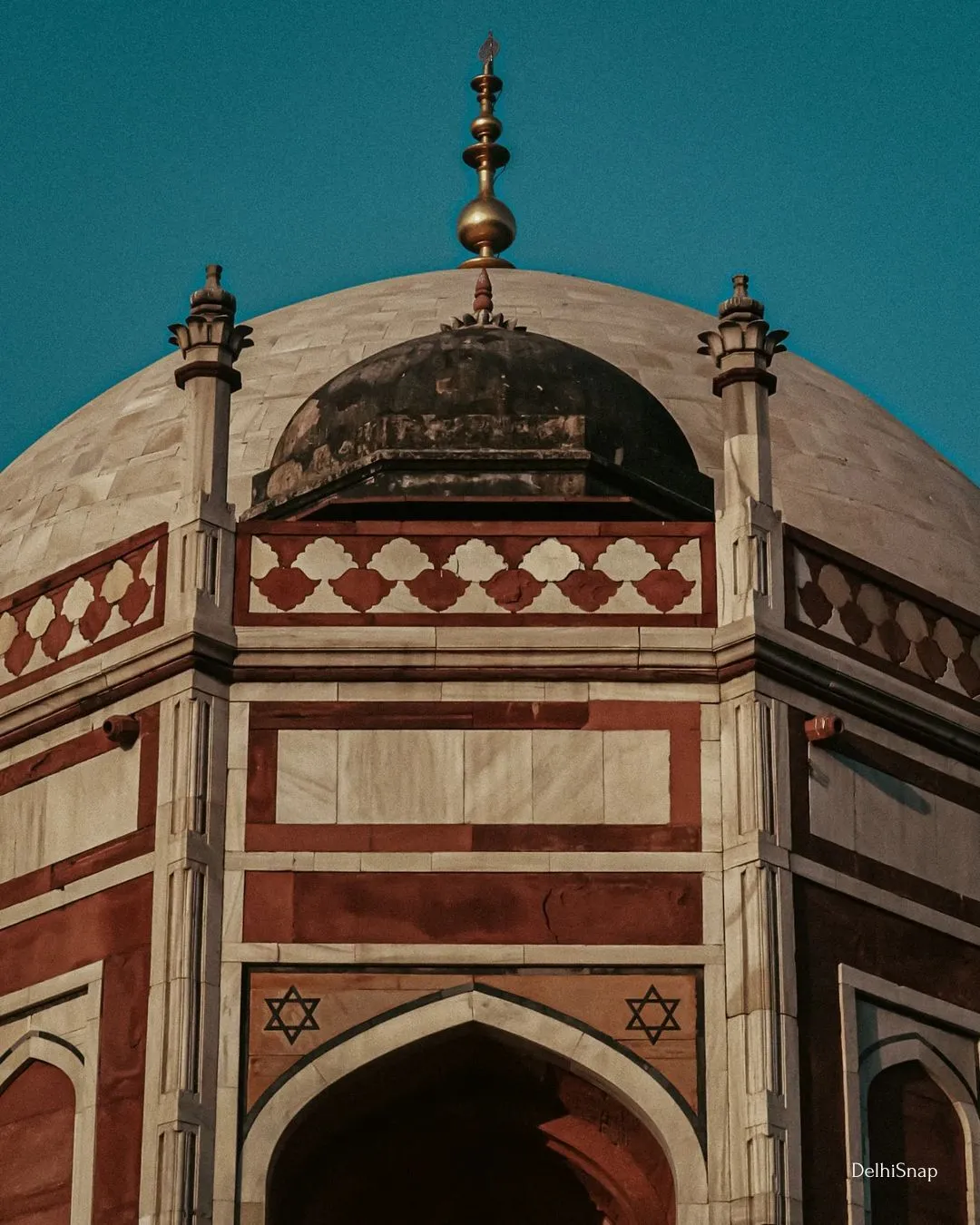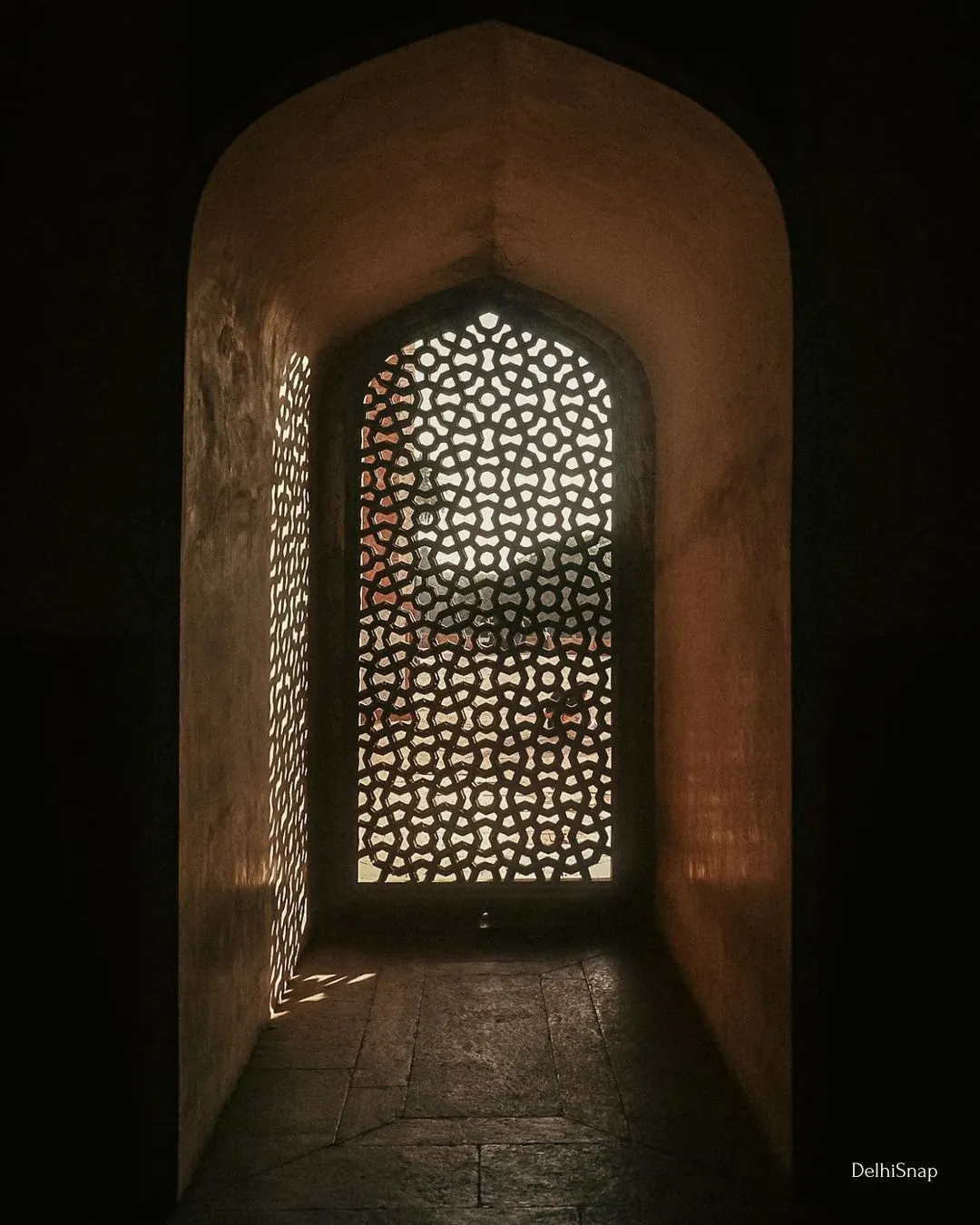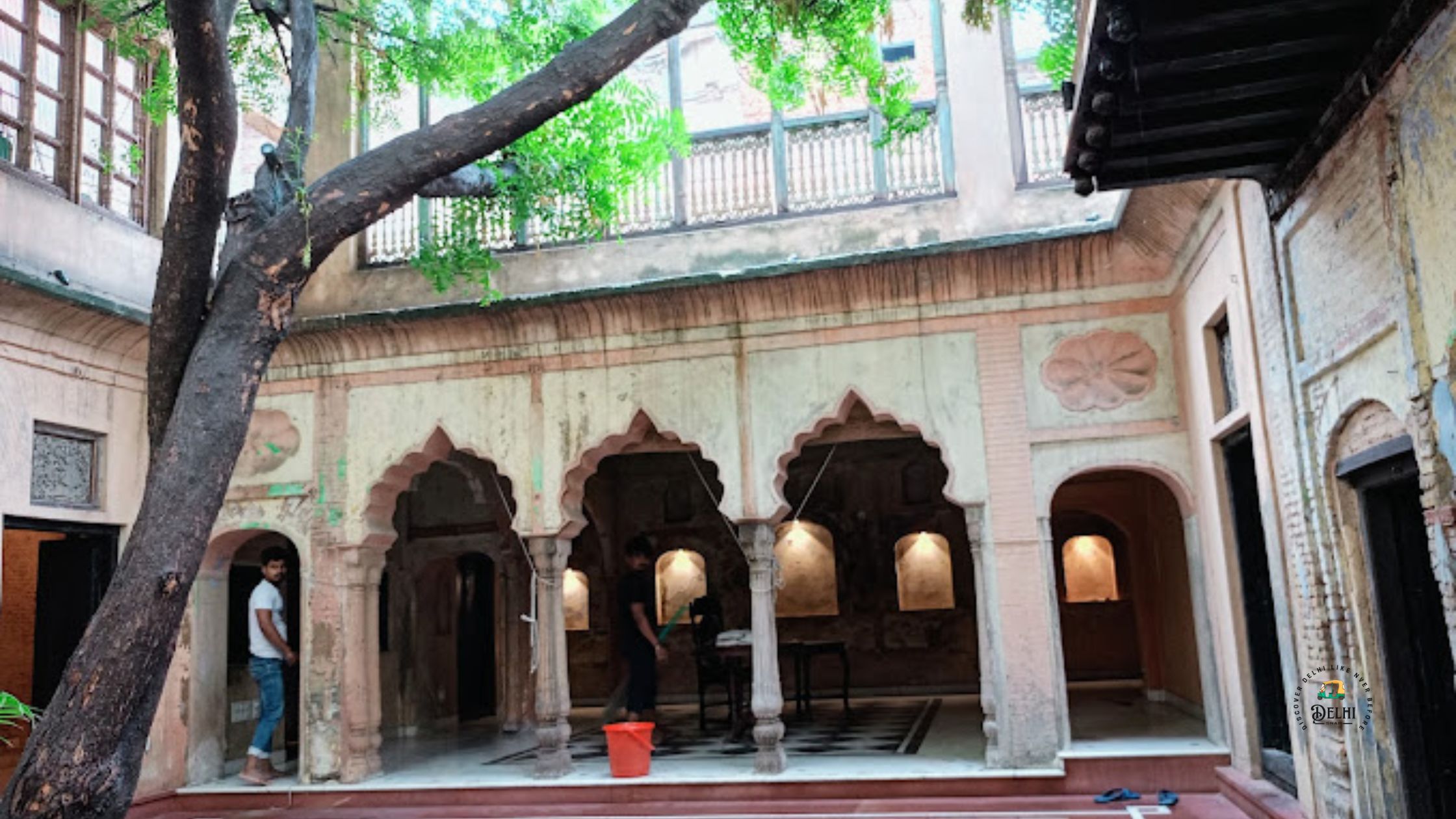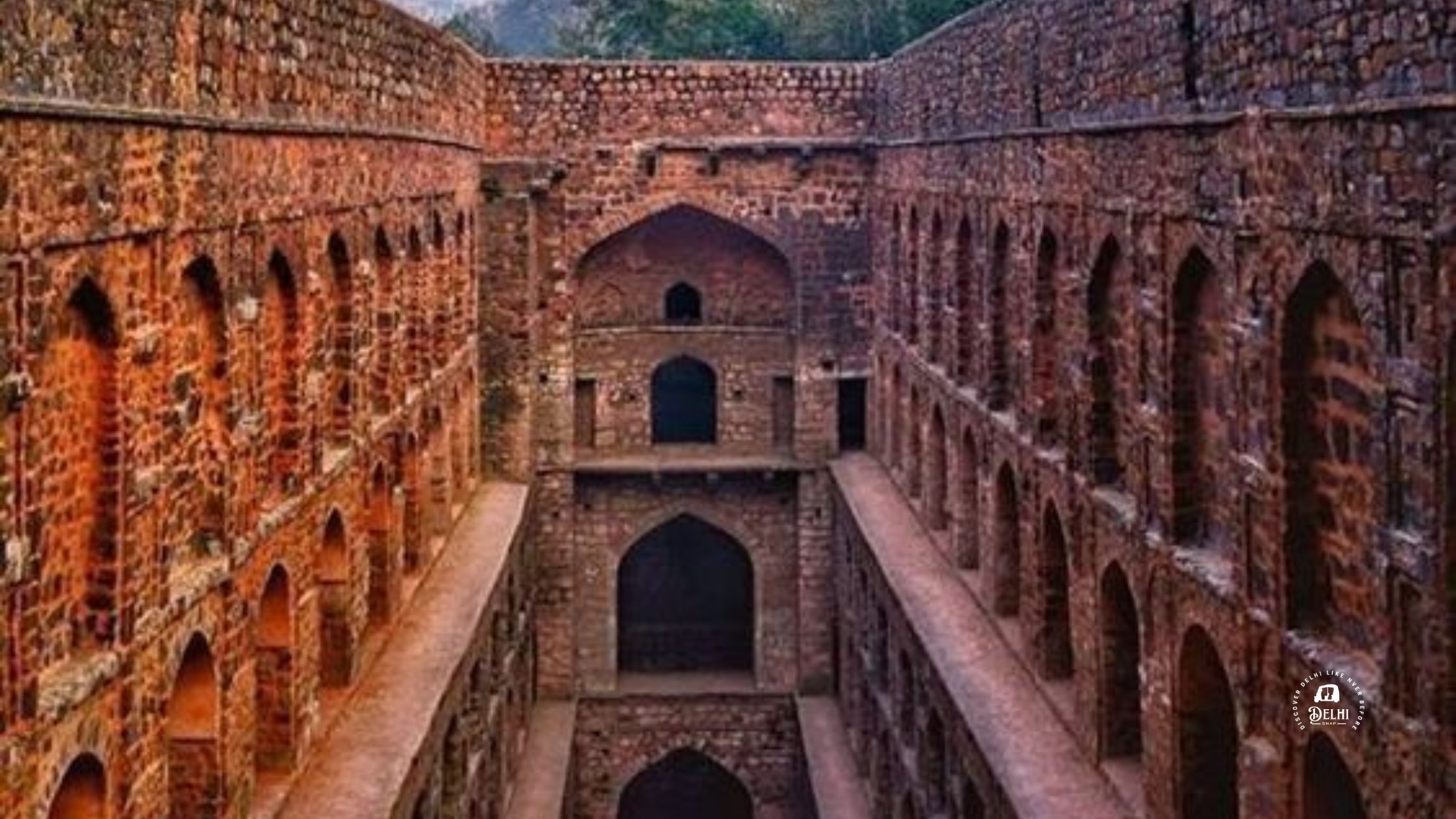The Humayun’s Tomb is a stunning example of Mughal architecture and history. Visiting this UNESCO World Heritage site felt like stepping into the grandeur of the 16th century.
Its History
Built in 1565 A.D., Humayun’s Tomb is the final resting place of Mughal Emperor Humayun made after nine years of the death. Commissioned by his widow, Empress Bega Begum, and designed by Persian architect Mirak Mirza Ghiyas, this architectural marvel is often seen as a precursor to the Taj Mahal. It features intricate detailing, lush gardens, and a symmetrical design that epitomizes Mughal splendor.
Entry Fees of Humayun’s Tomb
Humayun’s Tomb is open daily from sunrise to sunset. The entry fees are quite reasonable:
- Indian Citizens: ₹30 per person
- Foreign Nationals: ₹600 per person
- Children (up to 15 years): Free
Timings of Humayun’s Tomb
Timings Sunrise to 7:30 PM (Open All Days)
How to Get There
Located in Nizamuddin East, Delhi, the nearest metro station are
- JLN Stadium Metro Station on the Violet Line (2 km)
- Jangpura Metro Station on Violet Line (1.5 km)
- Sarai Kale Khan Metro Station on Pink Line (6.1 km)
Best Photography Spots & Timings of Humayun’s Tomb
Best Times to Visit:
Early Morning: The soft, golden light during sunrise casts a warm glow on the red sandstone of the tomb. This time of day is also less crowded, allowing for unobstructed shots.
Late Afternoon: The hour before sunset, known as the golden hour, offers beautiful, diffused light that enhances the intricate details of the tomb. The shadows are longer and softer, adding depth to your photos.
Evening: Just before the sun sets, the sky often takes on dramatic hues that can create a stunning backdrop for the tomb. The cooler evening air can also make your visit more pleasant.
Photo Spots:
Main Entrance Gate: Capture the grandeur of Humayun’s Tomb by framing it through the arches of the main entrance gate. This creates a natural frame that highlights the architectural beauty.
Water Channels: The symmetrical water channels in the Charbagh garden offer excellent leading lines that draw the viewer’s eye towards the tomb. Position yourself low to the ground to emphasize this effect.
South Side: The southern side of the tomb tends to be less crowded. The angle from this side captures the tomb against a backdrop of greenery, providing a contrast that makes the red sandstone pop.
Sunset View from Isa Khan’s Tomb: Located within the same complex, Isa Khan’s Tomb offers a fantastic vantage point for photographing Humayun’s Tomb, especially during sunset. The view from here provides a broader perspective of the entire complex.
Reflection Shots: Look for opportunities to capture the reflection of the tomb in the water channels. These reflections can add a dramatic and serene quality to your photos, especially in the early morning or late afternoon when the light is softer.
Pro-Tip:
Arrive early in the morning to avoid crowds and enjoy the ambiance. Don’t forget to explore the smaller structures within the complex, like Isa Khan’s Tomb. Wear comfortable shoes and stay hydrated, especially during warmer months

